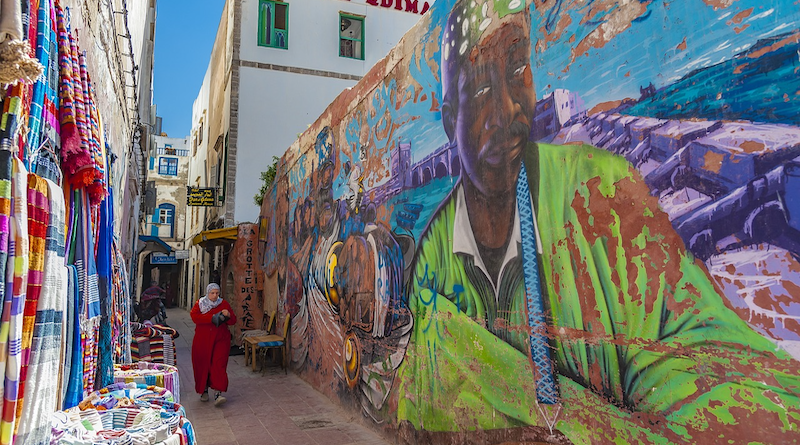The relationship between China and African Muslims, lost over time, is being revived by the Belt and Road Initiative (BRI). The bounding between the China and African Muslims is time tested, stretched and deeply rooted in history.
History, notably, tells us that the Islam has played an important role in China-Africa relations since the 9th century. During the Tang Dynasty, the Chinese had a strong trading relationship with the Islamic world, particularly with the Arabs, who had a strong presence in Africa. Furthermore, in the same period, Chinese Muslims, known as Hui, traveled to Africa as traders. They established trading posts in what is now Tanzania and Kenya, and brought Muslim scholars and teachers with them to spread their faith. The Muslim population in China then began to grow, and by the 13th century, there were enough Chinese Muslims to send a delegation to the African continent.
In addition, during the Ming Dynasty, Chinese Muslims and African Muslims traveled between China and Africa, further cementing the Islamic presence in both regions. In addition, many African countries have welcomed Chinese Muslim immigrants, who have become a significant presence in Africa. As a result, the role of Islam in China-Africa relations has grown significantly. Muslims have been instrumental in facilitating trade and strengthening ties between China and Africa, helping to bridge cultural and religious divides.
In 12th century, the Sino-Swahili trade buttressed the relation between East African Muslims and China. In this period, the cheap ceramics of China were traded against the artistically made high valued African commodities. The Chinese ceramics, on time, were placed in the mosques and houses of the Swahili houses.
Further history has recorded Ibn Battuta, the 14th-century Moroccan traveler and scholar, was the first Moroccan to visit China. He traveled through China between 1342 and 1346, visiting the cities of Quanzhou, Hangzhou, and Beijing. He wrote about his experiences in his book Rihla, which was published in 1355. As the original text of the book is almost impossible to find online, but the University of California at Berkeley has produced a commendable work entitled ‘Travels of Ibn e Battuta’. According to this writing, in Quanzhou, he met with Muslim merchants who had come from all over the world to trade in the city. He described the port city as “a large and beautiful city, with a great number of mosques, monasteries and colleges,” and noted its busy trade in silk and porcelain. In Hangzhou, he marveled at the city’s grandeur. He wrote of the city’s “beautiful and spacious markets,” and of its abundance of goods, including “silks of all colors and qualities,” “fine muslins and other cloths of various kinds,” and “porcelain and china-ware of all kinds.” He also wrote of the friendship and generosity of the Chinese people, describing how they welcomed him with gifts and invitations to their homes.
In present day China, the African population is dwelling in Guangzhuo. Locally, Xiaobei and Sanyuanli of Guangzhuo are called as ‘Chocolate city’. It is worth mentioning that the Sub-Saharan African Muslims in Guangzhou, China, are a small but growing population in the city. These Muslims are mostly from African countries such as Nigeria, Ghana, Mali, Senegal, and Sudan. They are mainly employed in trade and labor jobs, and a growing number of them have started their own businesses in Guangzhou. In recent years, the Muslim population in Guangzhou has seen an increase due to the increasing number of African students studying in the city. In order to meet the religious needs of African Muslims in Guangzhou, a number of mosques and Islamic centers have been established. These mosques provide a place of worship for the African Muslims and also offer Islamic education classes. In addition to this, there are numerous halal restaurants and grocery stores in Guangzhou that cater to the African Muslim community.
Looking into Africa, one cannot ignore the Djama El Djazair, or the “Grand Mosque of Algiers”. This is an iconic Islamic structure located in Algiers, Algeria. The mosque was designed and constructed by Chinese architects and engineers in 2016 under the banner of BRI. And, intriguingly, it is the largest mosque in Algeria. Notably, the mosque is made up of a vast square with a large central dome, flanked by four smaller domes. It can accommodate up to 10,000 worshippers, and is one of the most iconic landmarks in the city. The Grand Mosque is a symbol of the strong friendship between Algeria and China, and stands as a testament to the countries’ shared Islamic heritage.
Further, the interaction between the Egypt and Chinese Muslims is unpronounced yet remained important in history. Most direct contacts between Chinese and Egyptian citizens were between Chinese Muslims studying in Cairo before the Second World War. During this period, Pang Shiqian, a prominent Chinese student in Cairo, wrote a well-known book, Al-Sin wa-l-islam (China and Islam) about China in Arabic in which he made the claim that both China and the Islamic world were descended from ancient civilizations and will soon return to their former splendors. Lastly, the Chinese tourists’ interests in the civilization of Egypt has reached to its all-time epic. In comparison to all other nations outside the Asia-Pacific area, Egypt ranked as the 14th most popular destination in February 2017 for Chinese visitors travelling abroad over the Chinese New Year break.
Based on the data mentioned above, the BRI has perhaps bridged China and African Muslims together. This interaction ultimately brings another aspect to the BRI debate: religion’s role in it. Providing that China aims to pass its historic BRI project via religiously charged states, thence positive, progressive and amicable dealing with the religious communities is the only way forward for longer-run relations.

